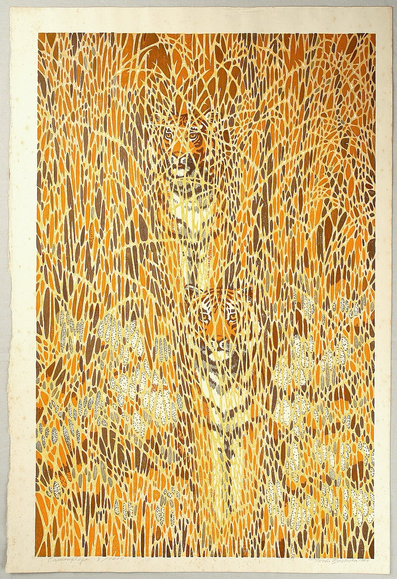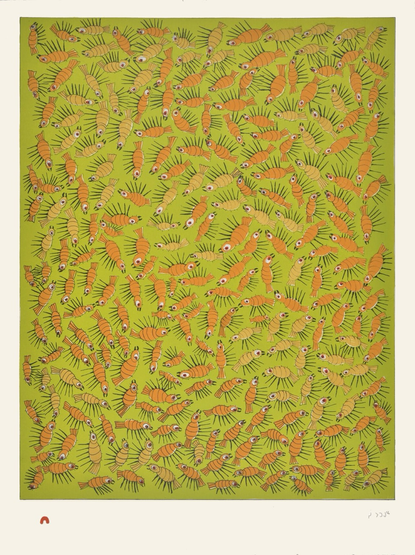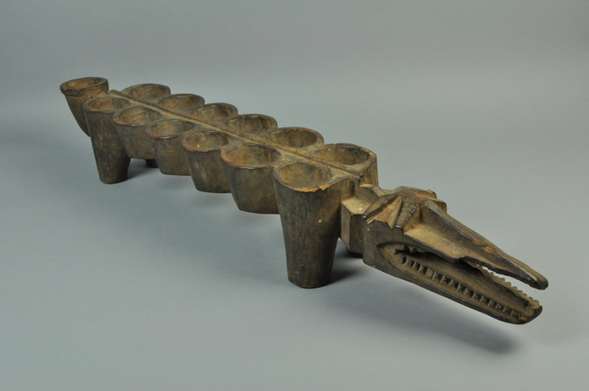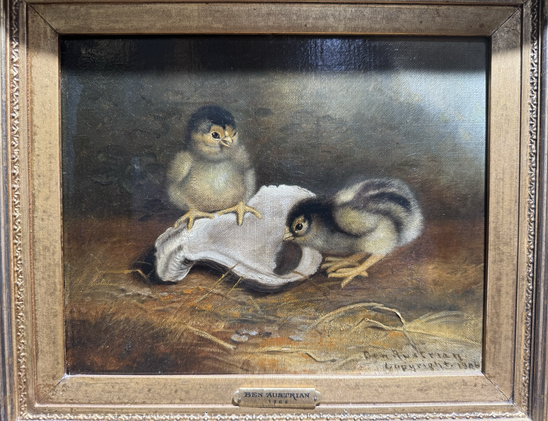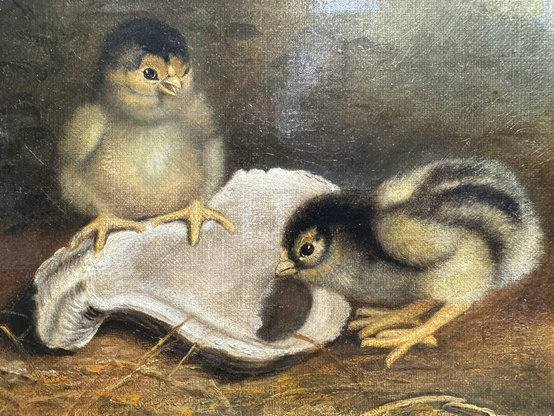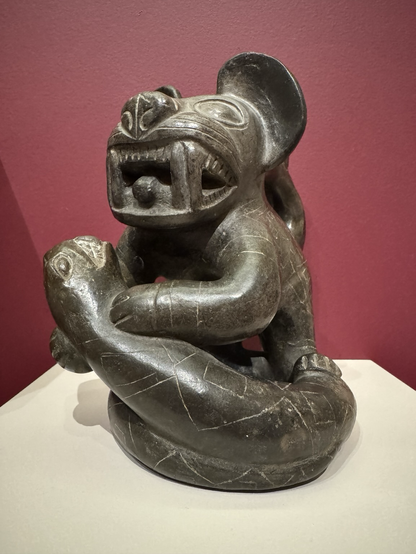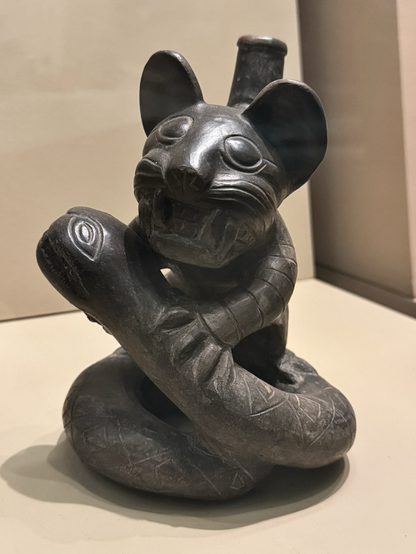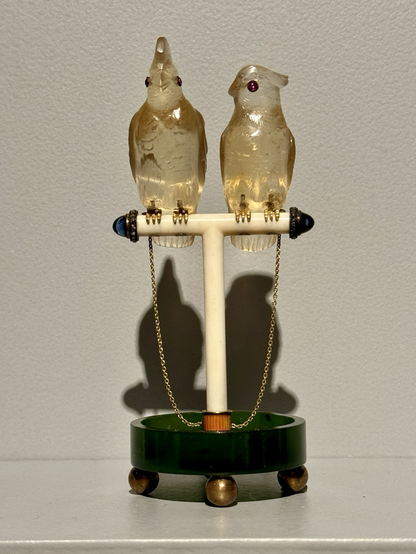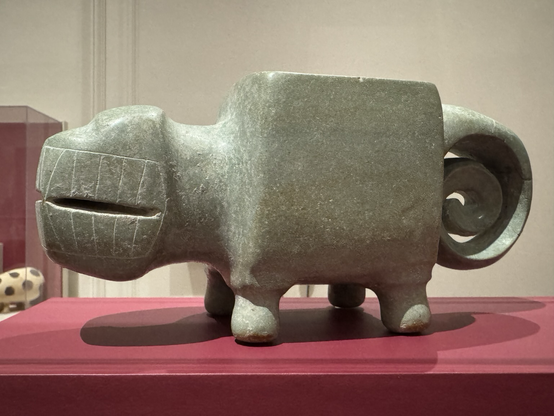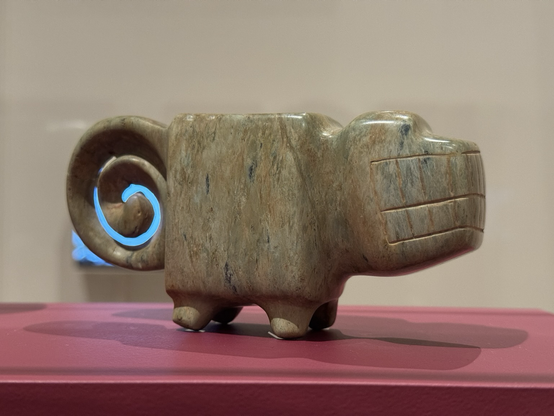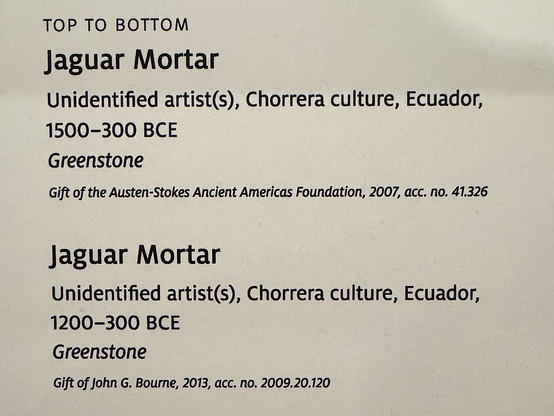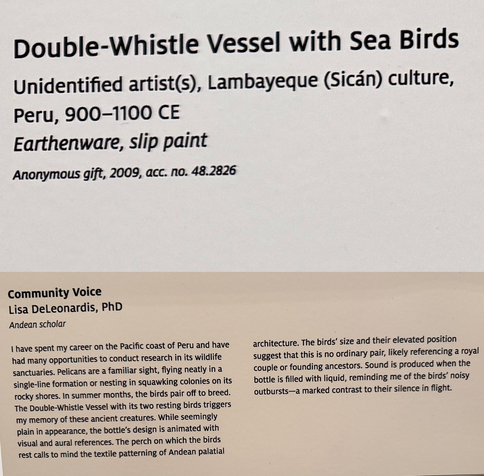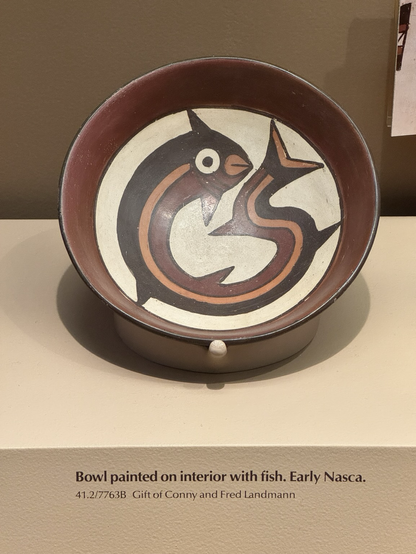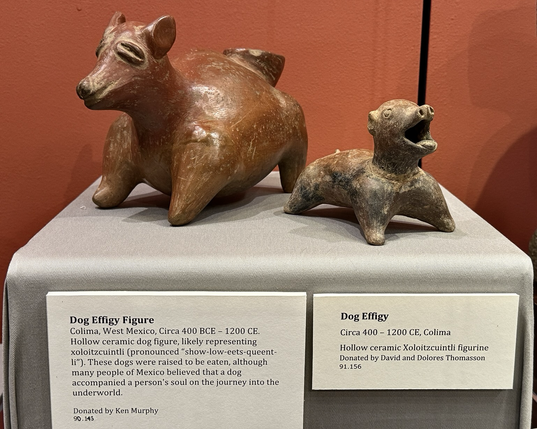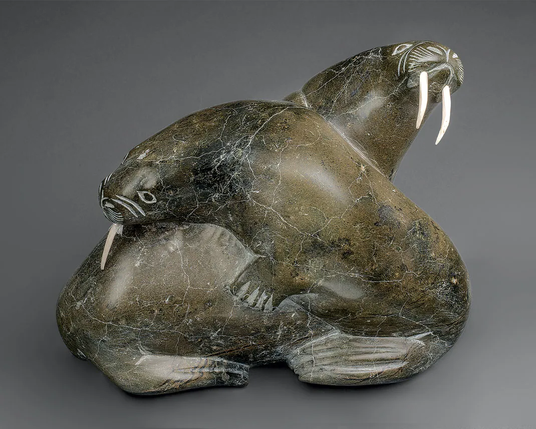#TwoForTuesday & #TigerTuesday :
Tōshi Yoshida (吉田 遠志, Yoshida Tōshi, Japan, 1911-1995)
Camouflage, 1985
Color woodblock print
https://ukiyo-e.org/image/artelino/46806g1
#JapaneseArt #Tigers
#TwoForTuesday
#TwoForTuesday for #InsectWeek :
Cee Pootoogook (Inuit, b.1967)
1. Mosquitoes
Cape Dorset, 2014
Lithograph, 30 x 22 1/2 in.
https://www.dorsetfinearts.com/cee-pootoogook
2. Arctic Lice
Cape Dorset, 2015
Lithograph, 30 x 22 1/2 in.
https://feheleyfinearts.com/product/arctic-lice/
#IndigenousArt #FirstNationsArt
For #TwoForTuesday on #WorldCrocDay :
Mancala Boards, early 20th c.
1. Ijaw culture, Nigeria
Wood, H15.2 x L100 x W16 cm
2015-22-34
2. Baule culture, Ivory Coast
Wood, H19.5 x L110 x W18.6 cm
2015-22-35
Penn Museum:
https://www.penn.museum/collections/object/506874
https://www.penn.museum/collections/object/506875
#AfricanArt
#TwoForTuesday :
Ben Austrian (USA, 1870-1921)
Two Chicks, 1906
Oil on canvas, 8 x 10 in. (20.3 x 25.4 cm)
On display at Biggs Museum of American Art (Gift of Sewell C. Biggs, 1993.1)
#BirdsInArt
#TwoForTuesday from recent museum visits:
1. “Feline Effigy Stirrup-Spout Vessel, Moche culture, Peru, 500-800 CE.” Spotted at The Walters (48.2843)
2. “Ceramic bottle molded & incised to depict a #feline grasping a #snake. Moche style, Peru.” Spotted at AMNH (41.2/8017)
#IndigenousArt #AndeanArt
#TwoForTuesday :
Pair of #Cockatoos
House of Fabergé, Russia, early 20th c.
Topaz, tourmaline, rubies, gold, ivory, enamel, nephrite, sapphires, diamonds
H 4 in. (10.16 cm)
On display at The Walters Art Museum (57.1913)
#BirdsInArt #Parrots
#TwoForTuesday :
“Jaguar” Mortars
Chorrera culture, Ecuador, 1500-300 BCE
Greenstone
Now on display at The Walters’ new Latin American Art / Arte Latinoamericano galleries.
#IndigenousArt #CentralAmericanArt
…Are they really jaguars though? “Feline” is a historically overused ID for stylized quadrupeds in Indigenous American art (with “canine” a strong second). My wishful thinking: they’re opossums 😂
#TwoForTuesday :
Double-Whistle Vessel with Sea #Birds
Lambayeque (Sican) culture,
Peru, 900-1100 CE
Earthenware, slip paint
H 6 3/16 x W 7 x D 4 3/16 in. (15.75 x 17.78 x 10.67 cm)
Now on display at the Walters Art Museum’s newly opened Latin American Art / Arte Latinoamericano galleries. (48.2826)
🆔 Peruvian Pelican (Pelecanus thagus)
#IndigenousArt #AndeanArt
#BirdsInArt
#TwoForTuesday :
1. “Bowl painted on interior with #fish. Early Nasca.” 41.2/7763B
2. “Painted ceramic bowl with a curled fish on interior. Nasca style, Peru.”
41.2/7762b
[Nazca culture, Peru: c.1-750CE]
On display at @ AMNH NYC
#IndigenousArt #AndeanArt
#TwoForTuesday :
“Double-bodied ceramic whistling bottle. Chimu style, Peru. One half is modeled and painted in the form of a #bat, the other half is a stylized spondylus #shell.”
[Chimú culture: c.900-1470CE]
On display at @ AMNH NYC [41.2/7436]
#IndigenousArt #AndeanArt
#TwoForTuesday :
Beaded #Turtle & Beaded #Lizard Umbilical Pouches
On display at Santa Rosa Junior College Multicultural Museum (CA, USA)
“Umbilical pouches are created by Plains women when babies are born. The umbilical cord of the newborn is dried & then sewn into the pouch. The pouch may then be then hung on cradleboards or blankets as a protective amulet or hung on a tree to draw spirits away from the child. Lizards represent boys & turtles represent girls.”
#NativeAmericanArt #IndigenousArt
#TwoForTuesday :
#Dog Effigy Figures
Colima, West Mexico, c. 400 BCE - 1200 CE
L: Hollow ceramic dog figure, likely representing Xoloitzcuintli (90.143)
R: Hollow ceramic Xoloitzcuintli figurine (91.156)
“These dogs were raised to be eaten, although many people of Mexico believed that a dog accompanied a person's soul on the journey into the underworld.”
On display at Santa Rosa Junior College Multicultural Museum (CA, USA)
#DogsInArt
#TwoForTuesday :
Norbertine von Bresslern-Roth
(Austrian, 1891-1978)
Meerschweinchen (#GuineaPigs ), 1921 & 1947
color linocuts, 14 × 19 cm & 18 x 23 cm
#WomenArtists
https://www.facebook.com/photo.php?fbid=2464737193811155
https://www.kovacek-zetter.at/exponat/42465
#TwoForTuesday :
Nishimura Hodo (蒲堂, Japan, active c.1930-1941)
Two #Rabbits - 2, 1940
Woodblock print with embossed colors, oban format 28.1 x 40.8 cm
https://ukiyo-e.org/image/jaodb/Nishimura_Hodo-No_Series-Two_Rabbits_2-00034762-040606-F12
#JapaneseArt
#TwoForTuesday:
Ornament with Two #Horses
China, nomadic, Han, 206 BCE - 220 CE
Cast bronze sculpture
3 x 2 7/8 x 1 in. (7.62 x 7.3 x 2.54 cm)
LACMA 63.36.14 https://collections.lacma.org/node/233904
#ChineseArt
#TwoForTuesday :
#Fox and #Swan Creamer
England, Staffordshire, c. 1800
Earthenware (Pratt ware), 12.1 cm (4 3/4 in.)
Cleveland Museum of Art 1962.121 https://www.clevelandart.org/art/1962.121
#TwoForTuesday + #TilesOnTuesday:
Tile panel with inscription and #peacocks
Iran, c.1825
Ceramic, H 20.5 x W 50 in (52.1 x 127 cm)
Asian Art Museum F2008.64.18.a-.b
https://searchcollection.asianart.org/objects/18663/tile-panel-with-inscription-and-peacocks
#BirdsInArt #IslamicArt
#TwoForTuesday:
Osuitok Ipeelee (Inuit, 1923 – 2005)
Untitled (#Walruses), c. 1977
Steatite, caribou antler; 29.2 x 37.2 x 21.9 cm
Musée des beaux-arts de Montréal inv. 2014.234.1-4 https://www.mbam.qc.ca/en/works/66799/
#IndigenousArt #FirstNationsArt
#TwoForTuesday:
Two Flat Stamps ( #Snake & #Frog )
Atlantic Watershed, Costa Rica, 1st–7th c. CE
Ceramic, H. 1 15/32 x W. 2 3/32 in. (3.7 x 5.3 cm)
Metropolitan Museum of Art, New York 1979.206.1181,.1183
https://www.metmuseum.org/art/collection/search/698256
#IndigenousArt #CentralAmericanArt
See ALT for more info!
